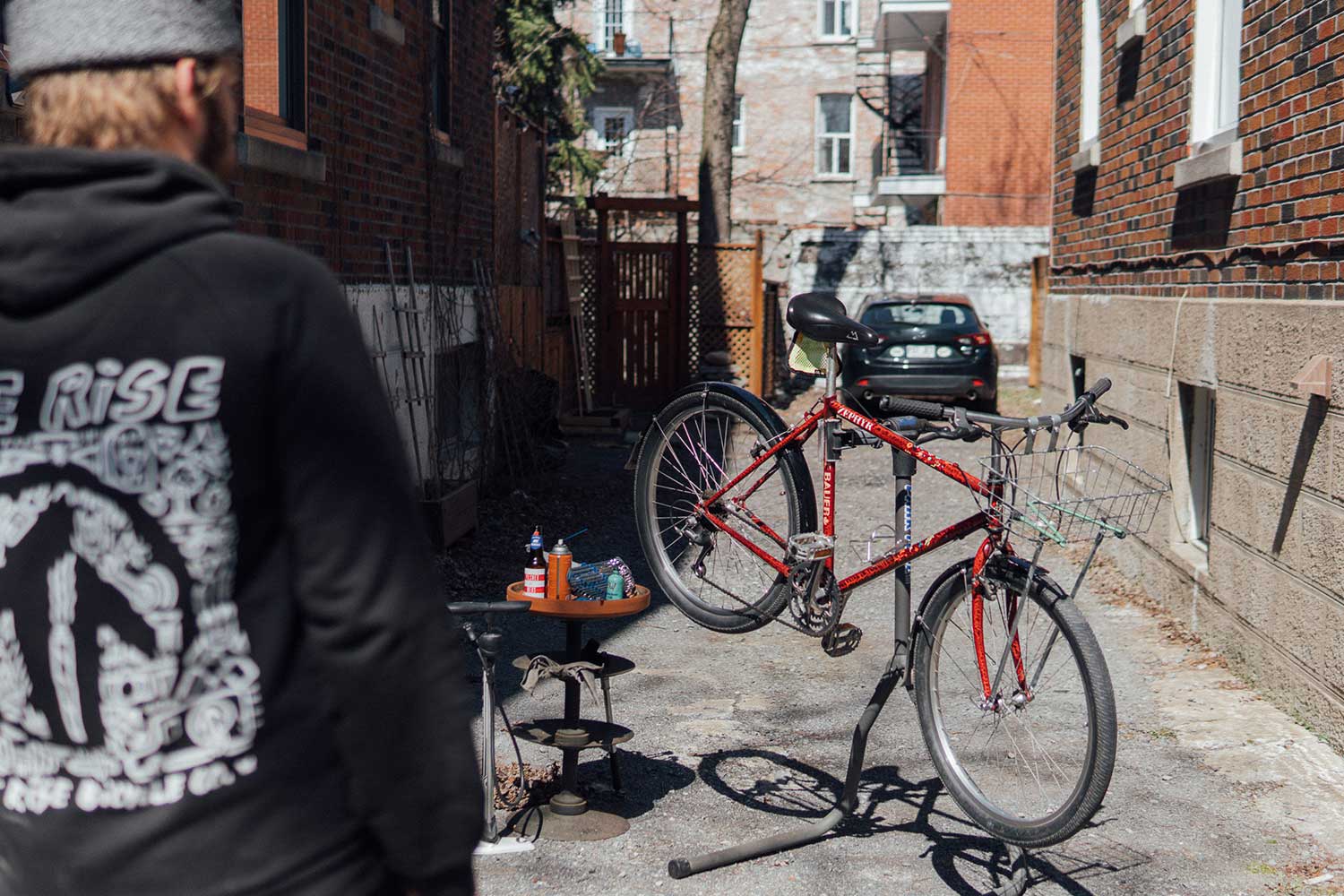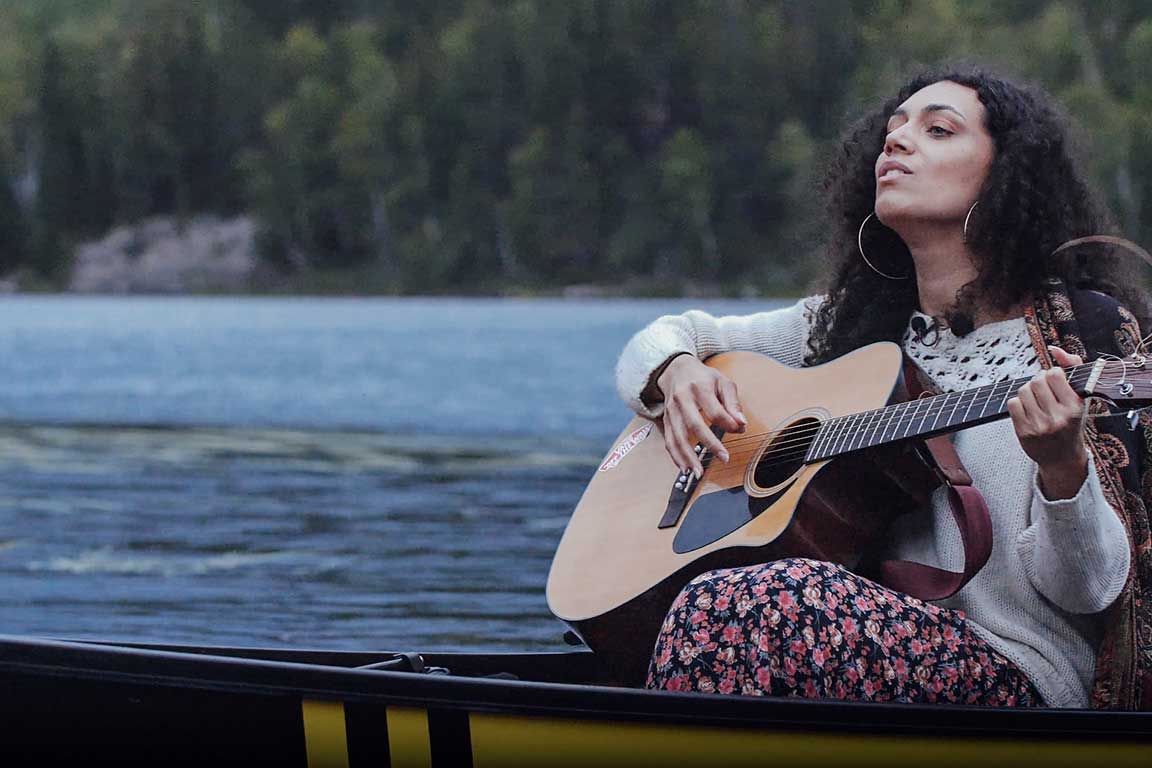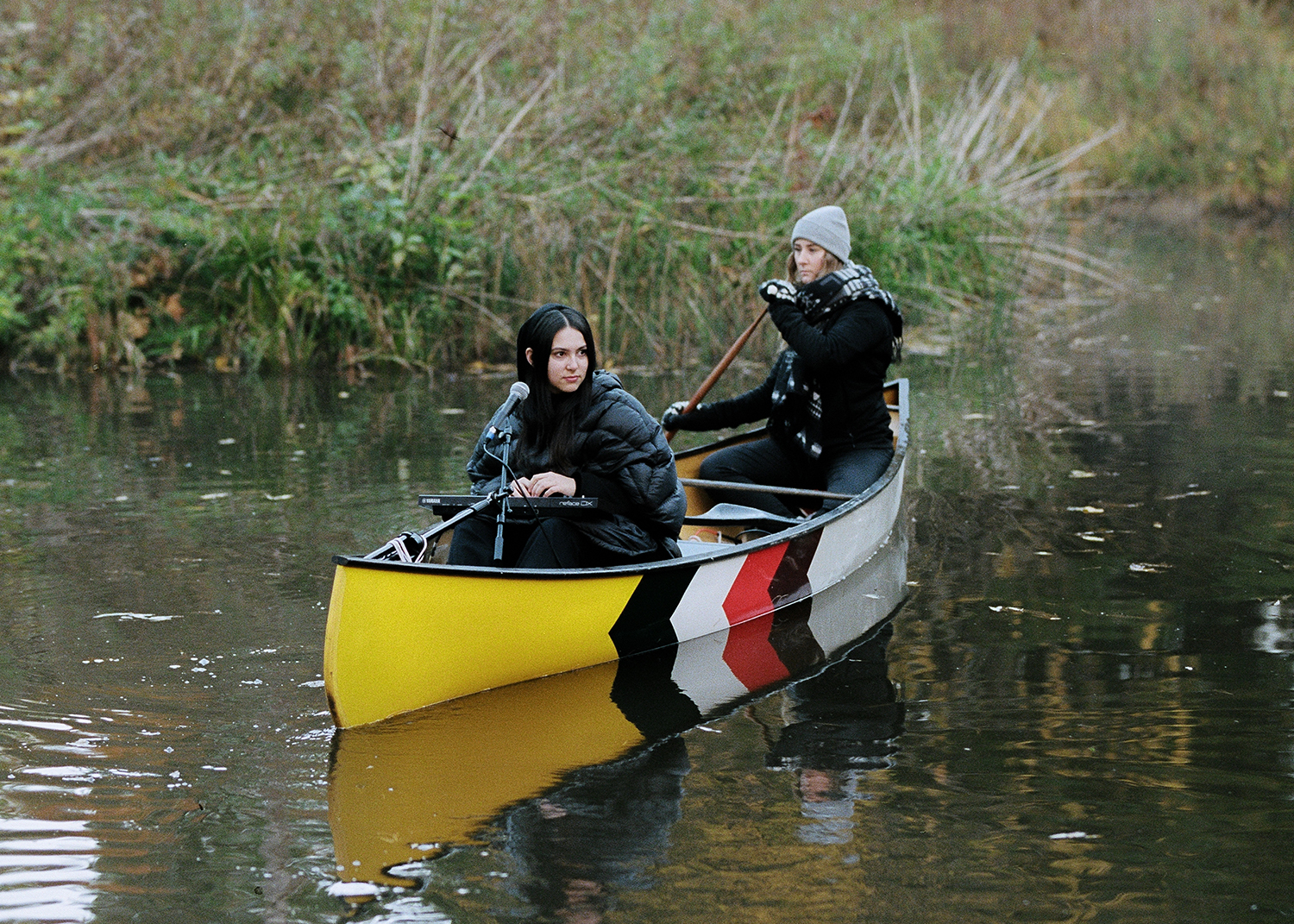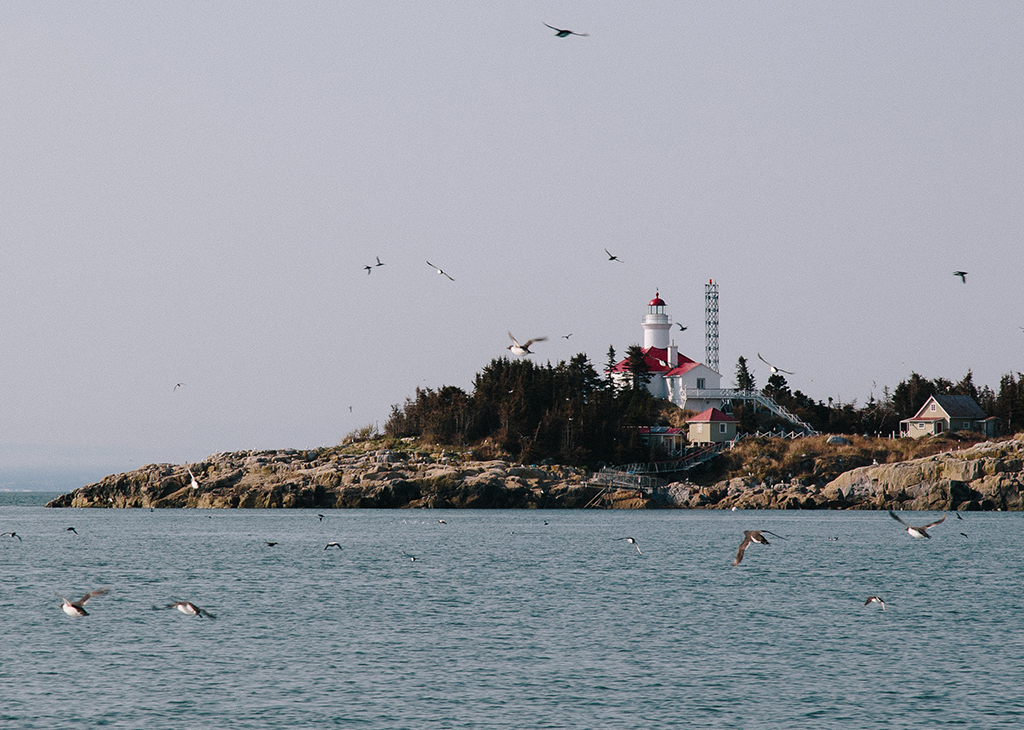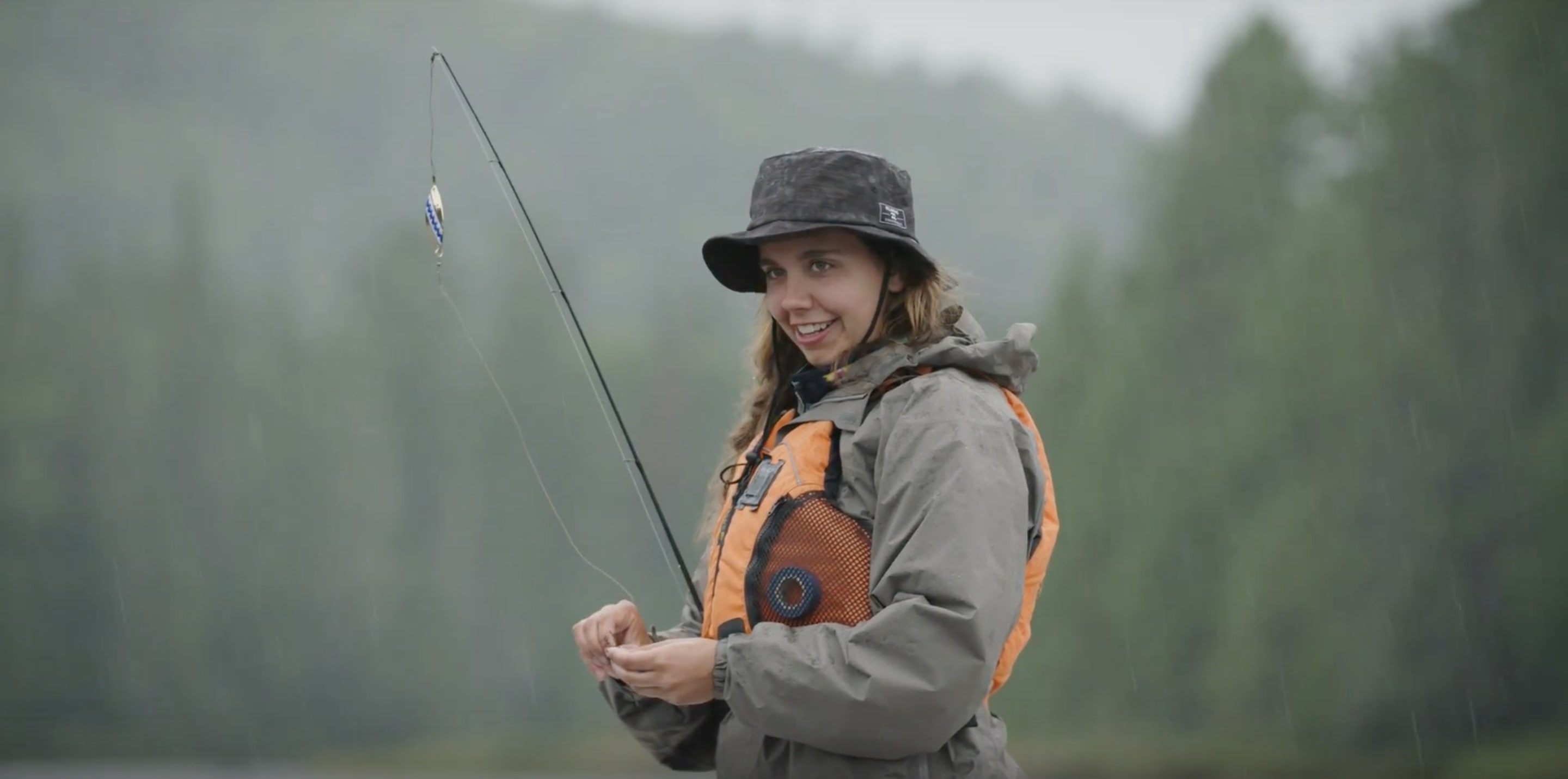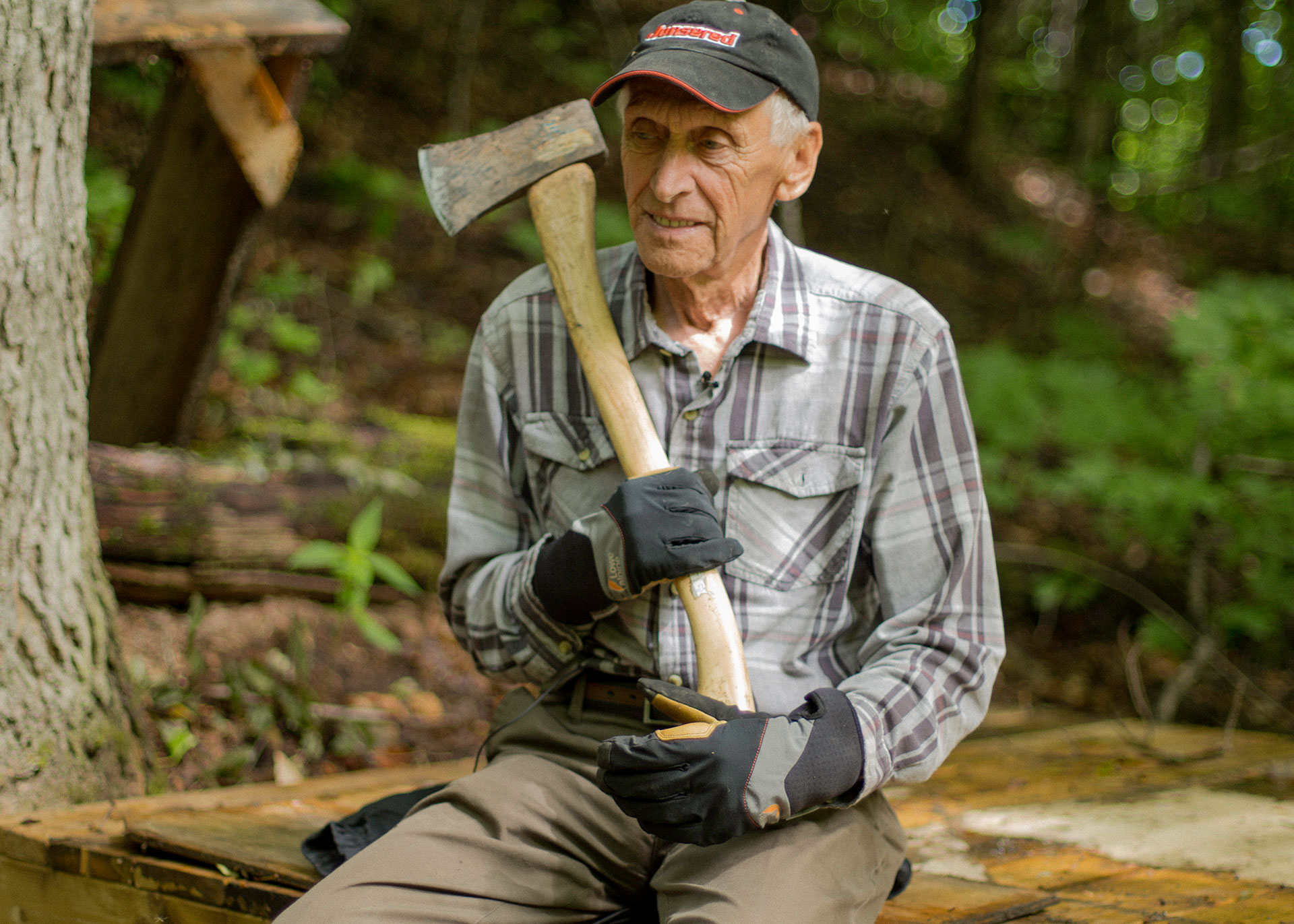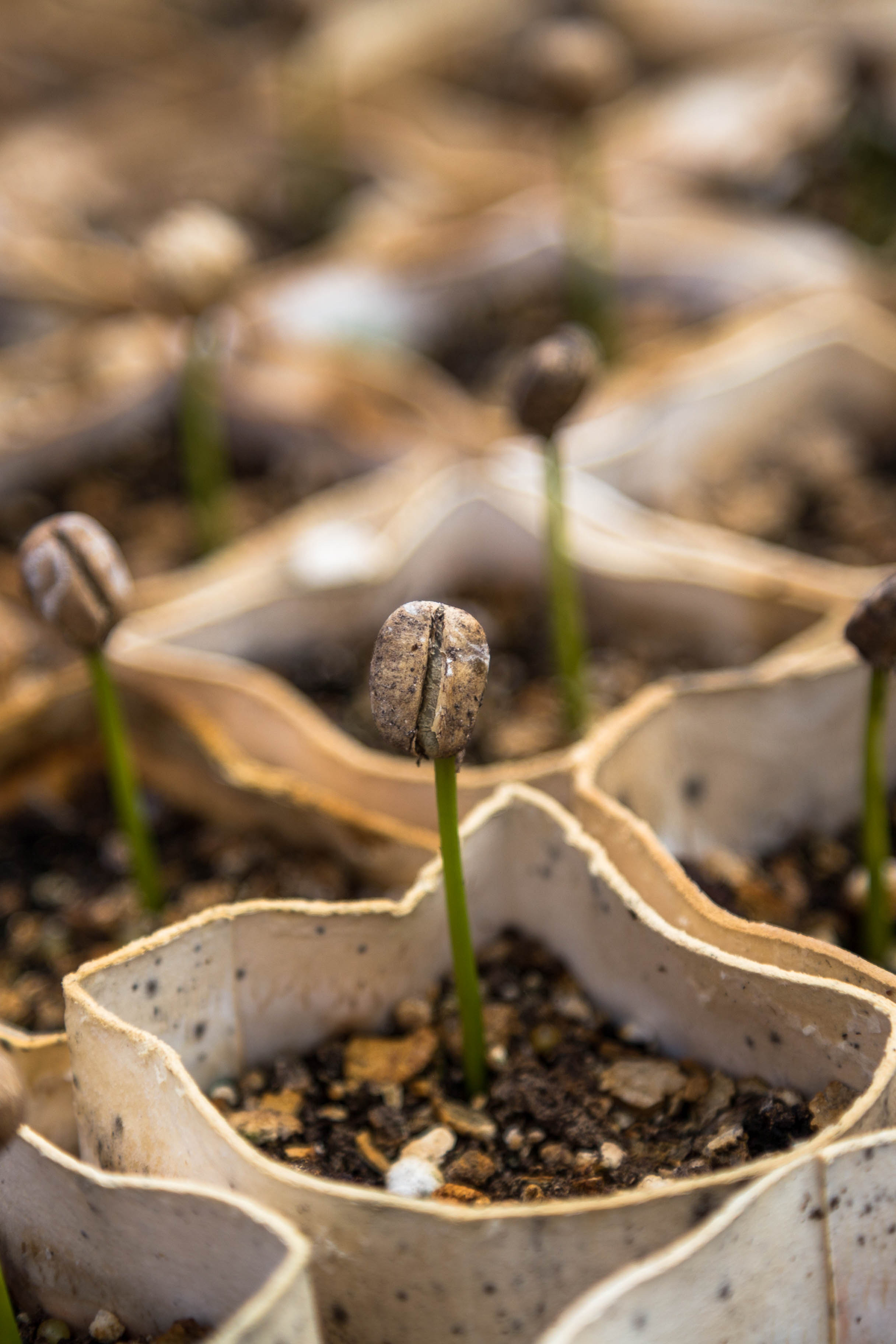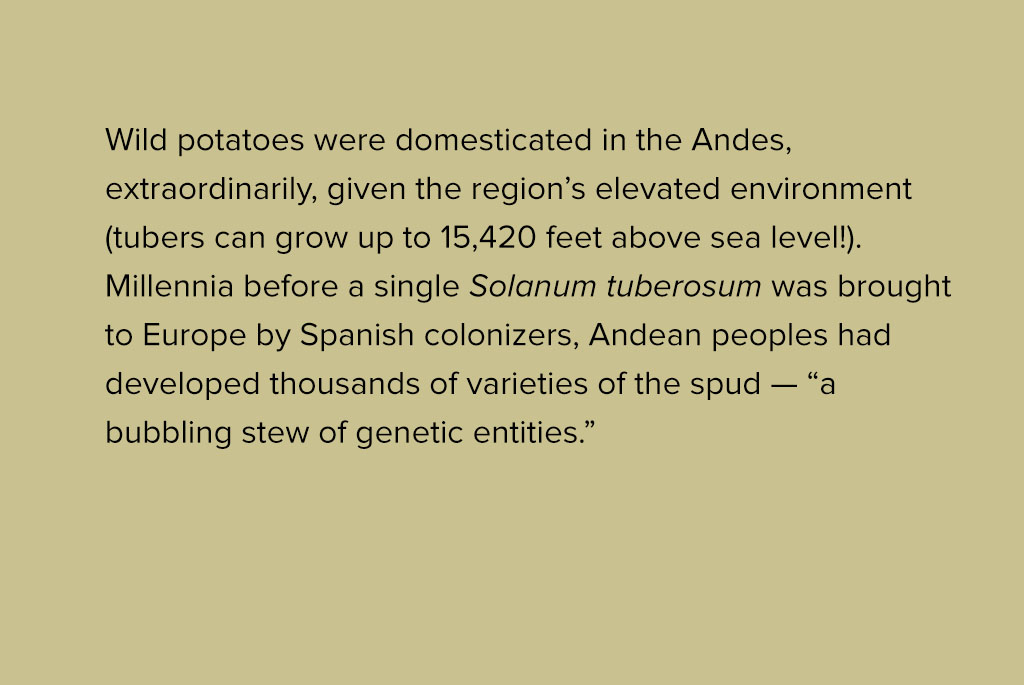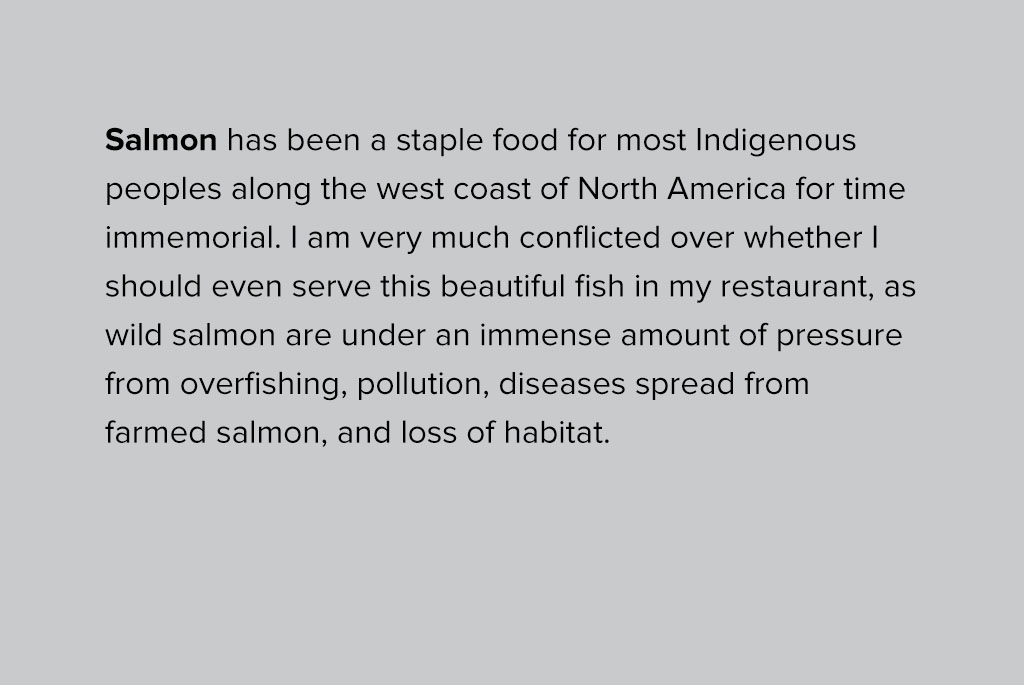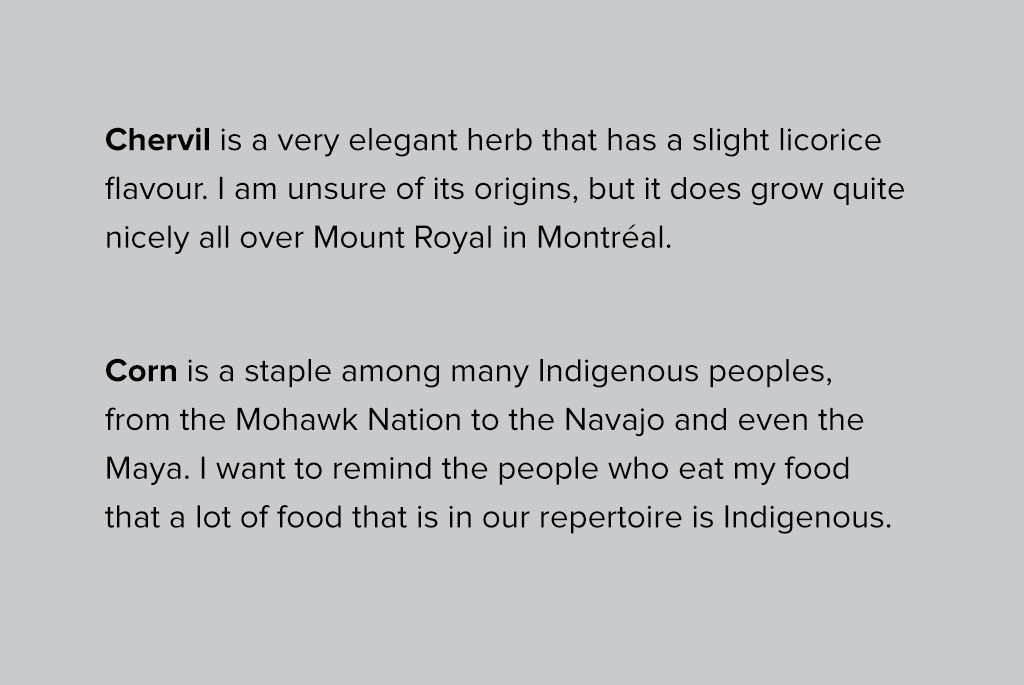First Nations of Food
A new generation of Indigenous chefs retracing their culinary heritage is resetting the table to make space for an activist narrative of food, and it’s delicious. Cooking has become a powerful arena for reclaiming access to their land, their histories, their cultures, and their identities. In this new series, we feature recipes and stories from North America’s culinary frontiers.
The Profile
THE PROFILE
George Lenser
Culinary chef
Indigenous rights activist
Punk rocker
With Nisga’a, Squamish, Wet’suwet’en,
German, and Belgian roots
From British Columbia
_________________________
George Lenser worked as a line cook at Joe Beef in Montréal, where, with the world’s eyes watching, they reinvented the face of traditional French and Québecois cuisine. It was there that the restaurant’s co-owner, Fred Morin, encouraged him to pursue his own identity and define his cooking style beyond culinary school. As a result, he started to wonder about his Nisga’a, Wet’suwet’en, and Squamish culinary traditions from British Columbia. He became eager to learn more than he had already been shown and taught. And because there aren’t many Indigenous restaurants making noise in the culinary world, he turned toward his own personal background and the knowledge he had inherited from his grandmothers.
Lenser quickly realized, while picking the brain of his maternal grandmother, that her knowledge had its limitations. She had been forced into residential schools, which prohibited her from speaking her mother tongue in public. This had distanced her from her parents, and also from her own kitchen and culinary heritage. Rather than discouraging Lenser’s search for his ancestral knowledge and recipes, it has inspired him to pursue “a resistance cuisine that unapologetically tells the stories” of his people.
His recipes, such as the one he presents to us here, are voicing his culinary lineage and resetting the tables to make space for an activist narrative of taste.
“I want my cooking to represent what’spossible for the future of my people.”
Read George Lenser’s story on Recodifying Indigenous recipes and ingredients in the modern kitchen in BESIDE Issue 04.
The Recipe
THE RECIPE
Salmon Cakes & Caviar
By George Lenser
_________________________
I created the salmon cakes and caviar dish with my grandmother in mind. I thought that if I had my own high-end restaurant, I could turn her recipes into something I would love to snack on. Both salmon and crab cakes are nothing new to the restaurant scene, but I still think that, in North America, our Indigenous cuisine is mostly unknown to non-Indigenous society. For now, let me tell you about my grandma’s salmon cakes. They were crispy, maybe a little dry, and packed with onions and potatoes. They have parts that are both undercooked and overcooked. And yet, they remained everlastingly tasty.
My grandma’s recipe came from her access to excessively abundant fresh salmon, which she would often can, dry, smoke, or freeze. It also came from other factors in her life. She was a single mom of seven children, and shared responsibilities with her parents to help raise these kids. Our family did not grow up by any means wealthy; we grew up within the oppressive realities of what colonial structures and systems had forced upon Indigenous peoples. My grandma had spent time in residential school, as had most of her siblings, cousins, nieces, and nephews. Long story short, we grew up in poverty, using what we could when we could. My grandma had salmon, potatoes, onions, salt, pepper, flour, and eggs — a perfect storm for an easy salmon cake. She would pop open her home-canned salmon, toss some potatoes into water, sauté some onions, mix in some flour, combine all the ingredients, and then form mini cake rounds. This is how my grandma would make her salmon cakes. No caviar. No crème fraîche. She would achieve flavours simply out of necessity.
I am fortunate to have had the options and opportunities that my grandmother or my mother — or, more accurately, all those who came before me since settler domination — did not have, to pursue my passion or career with minimal prejudices towards me and minimal governmental structures that would directly and hatefully restrict me. I do think that many Indigenous peoples are dealing with intergenerational trauma, but I am hopeful that my generation represents the beginning of happiness, power, and righteousness. My story and the stories of many other Indigenous peoples are those of the resilience and defiance of Eurocentric dominance.
As an Indigenous chef, I most often get asked, “What is Indigenous food?” Indigenous food is something Western society has already almost fully appropriated and expropriated: salmon, blueberries, strawberries, corn, beans, squash, seaweed, maple syrup, trout, bison, rabbit, cranberries. Since these ingredients are already being consumed by Western society, Indigenous cuisine may not seem like a major breakthrough on the plate. So, how is my food traditional? My food is served with stories — stories of new experiences, stories of the past, stories that showcase our resilience and our power.
Ingredients
For 12 cakes
_________________________

Step by step
_________________________
Step 1: Prep your ingredients.
Blanch the fingerling potatoes until slightly tender. Let cool and slice thinly; season with salt and pepper. Slice salmon into 1”] cubes and season with salt and pepper. Slice 1 bunch of chives as thinly as possible and slice one bunch of chives into 1”] lengths. In a small bowl, mix crème fraiche with liquid smoke. Heat the pearl onions in a cast iron pan. Then, with very little corn oil, sear them sliced side down until blackened. Remove and place in an airtight container to allow them to steam while cooling in the fridge.


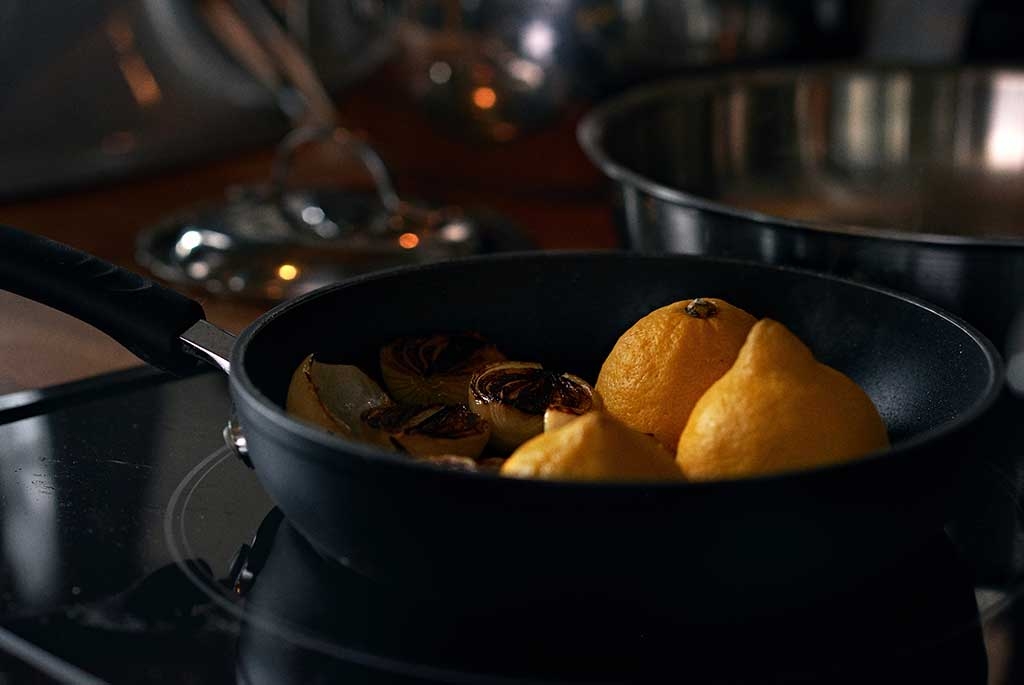
Step 2: Mash your potatoes.
Dice the Yukon Gold potatoes into large cubes and place them in a pot filled with cold salted water. Bring to a boil and then turn down to simmer until the potatoes are very tender. Once tender, mash while alternately adding cold butter and milk, then let cool to room temperature.

Step 3: Make your choux pastry.
In a heavy-bottomed saucepan, add water, salt, sugar, bay leaf and butter. Bring to a boil, then remove bay leaf, add flour all at once, and mix thoroughly with a wooden spoon. Turn down the heat to low while continuing to mix until fully combined. Once the flour is fully incorporated, transfer mixture to a bowl and continue to beat until it has cooled to room temperature (if you have a stand mixer, use this with the paddle attachment. If not, the wooden spoon works but it will take longer). Once the mixture has cooled, add the eggs one at a time, mixing until fully incorporated.


Step 4: Make Dauphine potatoes.
Once all the eggs are incorporated into the choux pastry, slowly add the room temperature mashed potatoes. Once all the mashed potatoes have been incorporated, add the thinly sliced chives and mix well. Place the mixture in a tightly sealed container and let cool in the fridge.
Step 5: Bake the salmon cakes.
Preheat the oven to 200 ºC [400 ºF]. Place the Dauphine potatoes into a large piping bag fitted with a large piping tip. Cover the bottom of a baking tray with corn oil, then place a layer of parchment paper on top of the oil. Pipe Dauphine potatoes onto the parchment paper in 12 cakes of any desired shape (try circular cakes, an eclair-like shape, or even donuts — the options are almost limitless). Press a few pieces of cubed and seasoned salmon gently into the Dauphine potatoes and place a few pieces of the thinly sliced and seasoned fingerling potatoes into the potatoes as well. Once the dish has been garnished, place in oven — if using a convection oven use with high fan — and let bake for 10 minutes. Refrain from opening and closing the oven door too much.

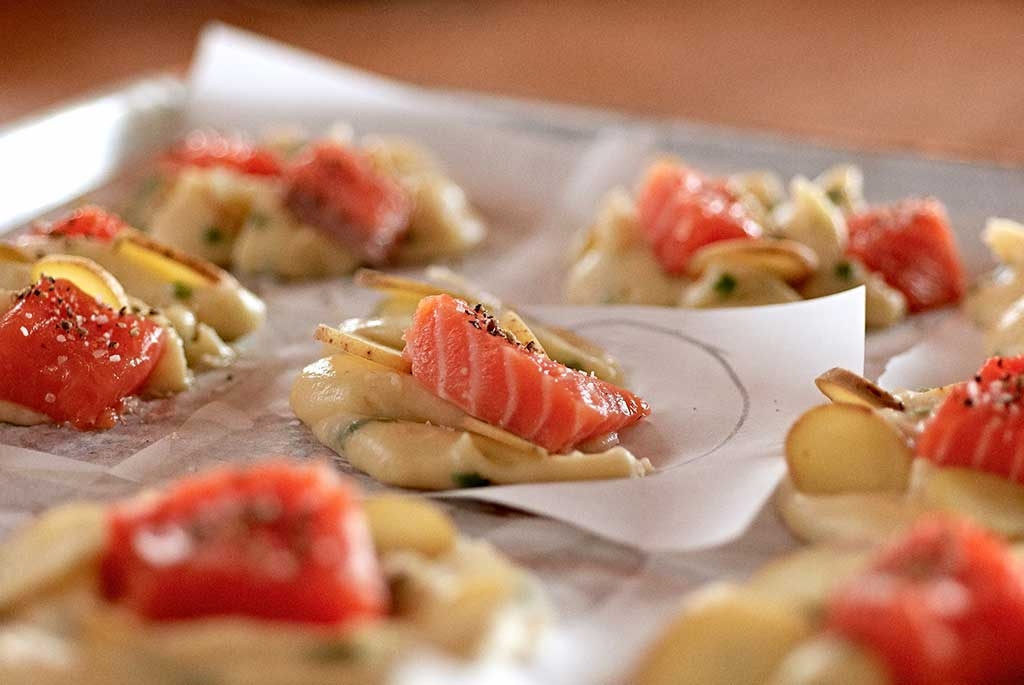
Step 6: Plate your dish.
Toss the parsley, chervil, chives, and halved pearl onions with lemon juice, olive oil, salt, and pepper. Place a large spoonful of smoked crème fraîche into centre of the plate and place the baked cake on top. Garnish with seasoned herbs, pearl onions, crème fraîche, and caviar.

Afterword
I will be hosting a pop-up restaurant with McKiernan Luncheonette, headed by the owners of Joe Beef and Maison Publique, in the coming months. I will be revealing a new dish — another cake — at this dinner. I call it Le Cake de la Résistance. During my time at Concordia University, I took a class called First Peoples and Education, which focused on Indigenous experiences within residential schools and how the government and Catholic religious terrorists worked in unison to commit cultural and literal genocide upon Indigenous peoples. In this class, I watched an Al Jazeera documentary called Canada’s Dark Secret in which an elderly woman recalls a time when she and all the other students had to eat bland oatmeal every day. On Thanksgiving Day, all the children were sitting there eating oatmeal while all the teachers and priests were eating a beautiful meal with turkey, mashed potatoes, and gravy. They even had a cake for themselves. Well, this elderly woman vividly remembered this dinner, which took place maybe 50 years ago. When all the teachers were eating, something happened that forced the teachers to leave the dining hall, and so they asked all the children to follow them. What did this young girl do? After years of abuse, she walked by the teachers’ untouched cake, swiped her finger through it, and ate their icing. And she never got caught. In the footage of this now-elderly woman, you could see her deep satisfaction, even after all these years. She had resisted in her own way.




